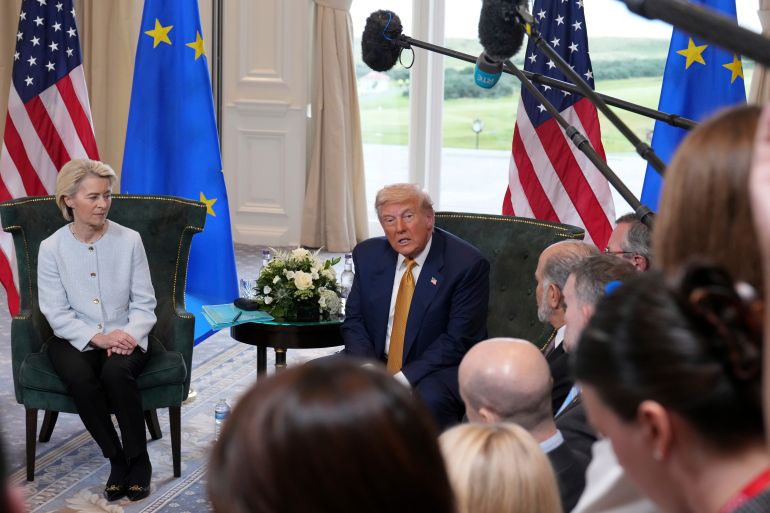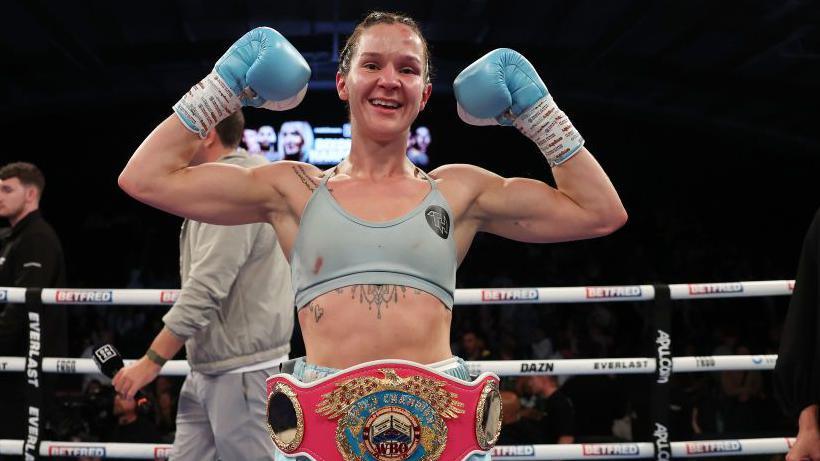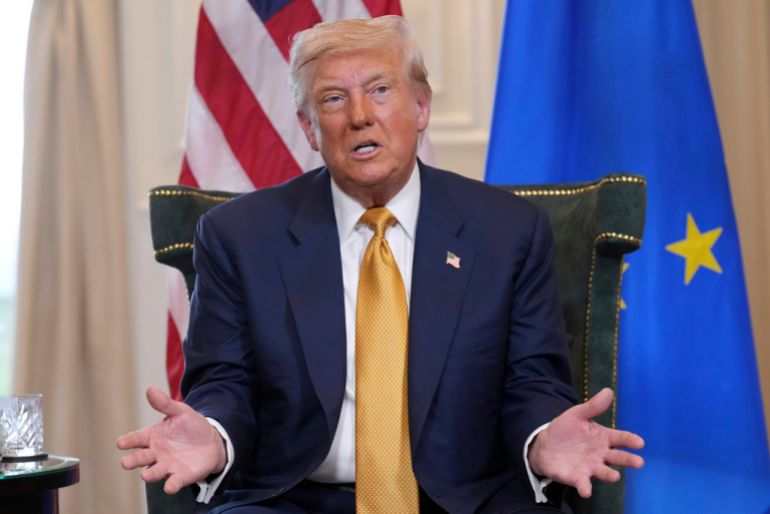As the US prepared to implement reciprocal tariffs, the world’s trade markets were on edge on Thursday as negotiations for a trade deal with Washington approached.
US President Donald Trump has already announced steep trade tariffs for many of the country’s largest trading partners, even as dozens of countries scramble to secure last-minute deals or extensions for negotiations beyond the Friday, August 1 deadline.
More than 120 days after President Trump’s administration first declared a string of tariffs on the infamous “Liberation Day,” Friday’s deadline comes.
His administration appears to be set to start imposing new tariffs on those nations that don’t reach a trade agreement by the end of today despite several delays since Trump took office in January of this year.
So, what will happen tomorrow? Which nations have deals in place already? Who hopes to seal a last-minute deal, then?
What will happen on August 1?
Experts claim that the US’s decision to impose a significant round of reciprocal tariffs on imports from various nations marks a pivotal moment in global trade dynamics as the clock runs down.
Trump is steadfast in saying that he won’t be extending this deadline. “THE AUGUST FIRST DEADLINE IS THE AUGUST FIRST DEADLINE – IT STANDS STRONG, AND WILL NOT BE EXTENDED. A BIG DAY FOR AMERICA, ” On Wednesday, Trump made a post on Truth Social, his social media platform.
At midnight Eastern Time tonight, therefore, US Customs and Border Protection will begin enforcing these new duties, which will range from 15 percent to 50 percent – or even higher in some cases – depending on the trading partner, the nature of the goods being traded and whether the trading partner and the US have specific agreements in place.
Certain industries will be subject to additional sector-specific tariffs. For instance, most nations will have a 50% tariff on copper, steel, and aluminum, while most nations will have a 20% levy on pharmaceutical goods.
The White House confirmed that Trump will sign new executive orders on Thursday, formally imposing all these higher tariffs. Some of the US’s biggest trading partners, including Mexico, Taiwan, and Canada, are likely to be recipients.
Many nations are likely to experience immediate economic repercussions as well as potential changes in diplomatic relations as a result of sweeping new tariffs on all exports to the US.
Tariffs may also cost the US economy. In its most recent analysis, the Yale Budget Lab, a non-partisan research center, noted that higher import prices could add an additional $2,400 to US households in 2025.
As businesses struggle to pay costs or pass on profits from imported goods like electronics, pharmaceuticals, and clothing, they may have to deal with new supply chain disruptions.
Trump is introducing so many new tariffs, why?
Trump instituted a “national emergency” in April with his “Liberation Day” tariff plan, which imposed a standard 10 percent baseline tariff on all imports, followed by higher, country-specific “reciprocal” tariffs.
The US has large trading deficits with many countries, which Trump believes are deeply unfair.
Therefore, the Trump administration argued that these new rates were necessary to repair these trade imbalances in order to boost US manufacturing and employment, despite the fact that economists contend that deficits are not actual proof of unfair trade practices.
Beyond trade, experts point to the Trump administration’s use of these tariff threats to advance agendas like reducing immigration, tackling the opioid and fentanyl crisis, and pressing allies and partners on geopolitical issues, such as Brazil’s legal action against Trump ally Jair Bolsonaro.
In the last-minute run-up to the August 1 deadline, Trump’s administration has strong-armed trading partners, including Japan, the European Union, Indonesia and the Philippines, into new deals under which they accept higher US tariffs in exchange for continued market access and investment commitments – and in most cases, a promise not to levy counter-tariffs of their own.
Who already has US deals in the bag?
European Union
The EU has agreed to a 15 percent tariff on most of its exports to the US, including cars and pharmaceuticals, in exchange for zero tariffs on select US exports and commitments to buy US gas and increase investments. Trump had initially threatened a 30% rate.
Japan
Japan promises to invest $550 billion in the US economy after reducing the threat of a 25% tariff on its exports to the US.
United Kingdom
Exports to the US are subject to a 10% tariff rate from the UK. Additionally, steel and aluminum were subject to a 25% sectoral tariff, half of which were applied to other nations.
South Korea
A lower 15 percent tariff will apply to South Korean imports to the US, in return for a $350bn investment pledge and zero tariffs on US exports like cars and agricultural products.
Indonesia
By agreeing to purchase US Boeing aircraft and to remove or reduce trade barriers, Indonesia has negotiated a 19% tariff on its exports to the US, down from the 32 percent that is currently threatened.
Vietnam
Vietnam has agreed to a 20 percent tariff on most exports to the US, with an additional 40 percent levy to be applied to “transshipped” goods – those entering the US via another location – while also agreeing to zero tariffs on US imports like large-engine automobiles.
Philippines
Along with commitments for improved military cooperation, this Philippines has agreed to a 19% tariff on its exports to the US. There are also no tariffs on US exports to the Philippines.
Pakistan
Despite the US’s agreement to develop oil reserves, specific tariff rates for goods are still undetermined.
Which big US partners have no deal yet?
As of Thursday, there were no trade agreements signed between the top three trading partners of the US, including China, Canada, and Mexico.
Mexico
With nearly $ 840 billion in total trade, driven by industries like agriculture and cars, the US ranks first among its trade partners. With no new deal for August 1, existing tariffs of 25 percent on most imports will persist under earlier 2025 trade war measures, with some exemptions under the United States-Mexico-Canada Agreement (USMCA).
Canada
With about $700 billion in revenue flowing between the two nations, primarily in energy, vehicles, and aerospace products, it is second in terms of size. Trump has threatened to impose a 35 percent tariff on goods that don’t comply with the USMCA if no agreement is reached before the August 1 deadline.
China
Third among the top US trade partners, Beijing trades about $532bn with the US, focused on electronics, machinery and consumer goods. Following a agreed pause until August 12, a 30% combined tariff will be applied without a permanent agreement. That came after an imports tariff of 145 percent had already been implemented.

Who would like a last-minute deal in the hopes?
India
Even a “very good friendship” with Washington couldn’t stop Trump’s reciprocal tariffs from affecting India, the fourth-largest economy in the world and the most populous nation.
On Wednesday, Trump announced a sweeping 25 percent tariff on all Indian goods exported to the US, plus an unspecified penalty for buying energy from Russia, as trade deal negotiations remain unresolved.
Trump will not ignore the trade deficit that the US and India had estimated to be worth about $ 130 billion in 2024, with US exports to India worth $ 41.8 billion and imports from India at $ 87.4 billion.
Trump wrote on his Truth Social platform, “While India is our friend, we have done relatively little business with them because their tariffs are far too high.”
Later, in another post, Trump said he did not “care what India does with Russia. For the time being, they can combine their exhausted economies.
We do very little business with India because their tariffs are among the highest in the world. Likewise, Russia and the USA do almost no business together, “he wrote”. Let’s continue with that.
The Indian government stated in a statement that it was examining the effects of these new tariffs and that it had been discussing a fair, balanced, and mutually beneficial bilateral trade agreement.
The statement further noted that” we remain committed to that objective. By noting that the government places the greatest emphasis on promoting and protecting the welfare of our farmers, entrepreneurs, and MSMEs, New Delhi “seen what it believes may be potential barriers to the deal.”
Pakistan
Prior to and following the military conflict with New Delhi earlier this year, Pakistan, India’s neighbor, saw its stock rise with the Trump administration.
Trump revealed that the US had concluded a deal with Pakistan, where they will work together on developing oil reserves, but did not announce tariffs”. Who knows, maybe they’ll eventually export oil to India.
Taiwan
If no agreement is reached by August 1st, Taiwan will also have a high-stakes deadline, with proposed tariffs set at 32 percent, excluding semiconductors.
Taiwanese officials have engaged in intense negotiations in Washington, spanning four high-level rounds led by Vice Premier Cheng Li‑chun and US counterparts, addressing not only tariff technicalities but also non‑tariff trade barriers, investments and market access. These discussions reportedly awaiting US approval.

Who has little hope of reaching a deal with the US?
Brazil
President Trump has officially imposed a 50 percent reciprocal tariff on Brazilian imports, making it one of the most severe tariffs among the major US trading partners.
Trump has been unfavorable about the prosecution of former US president Jair Bolsonaro, who is accused of plotting a coup to overturn his 2022 election victory, despite the fact that the US has a trade surplus of nearly $7.4 billion with Brazil.
Trump has publicly called the trial a” witch-hunt “and an” international disgrace”, tying his imposition of a 50 percent tariff on Brazilian imports, announced on July 10, directly to this issue.
The Brazilian government was alarming. Trump’s measures were described as “economic blackmail” and negotiations had stalled, according to President Lula.
Speaking at a news conference in Washington this week, Pierre-Olivier Gourinchas, the IMF’s chief economist, called for an end to the trade war.









